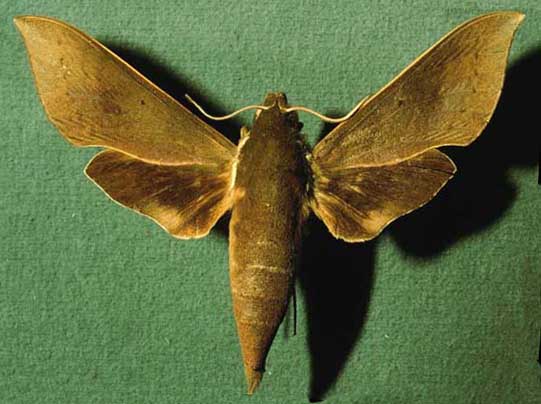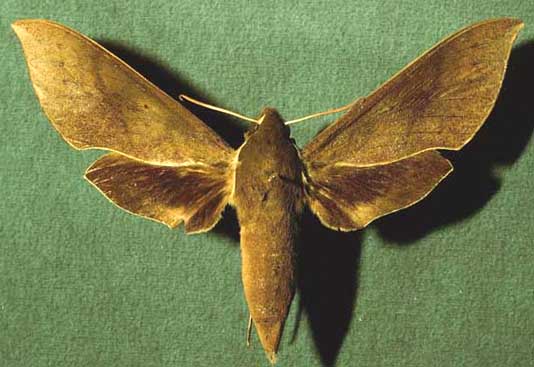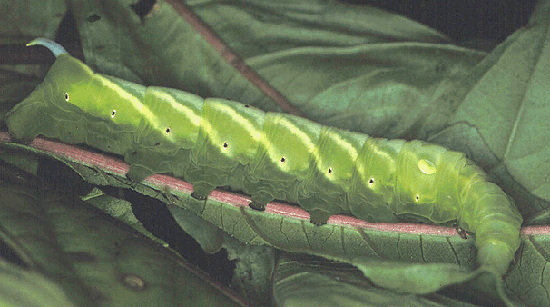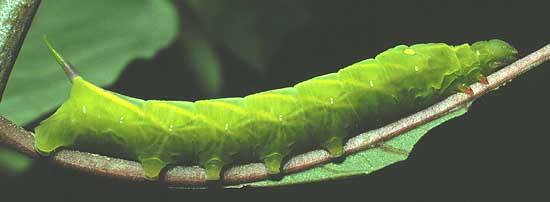Xylophanes porcus porcus
Xylophanes porcus porcus

Xylophanes porcus porcus male courtesy of Dan Janzen.
This site has been created by
Bill Oehlke at oehlkew@islandtelecom.com
Comments, suggestions and/or additional information are welcomed by Bill.
TAXONOMY:
Family: Sphingidae, Latreille, 1802
Subfamily: Macroglossinae, Harris, 1839
Tribe: Macroglossini, Harris, 1839
Genus: Xylophanes Hubner [1819] ...........
Species: porcus porcus Hubner, [1823]
|
MIDI MUSIC
.....It's a Wonderful World.....
copyright C. Odenkirk
ON.OFF
<bgsound src="world.mid" LOOP=FOREVER>
|
DISTRIBUTION:
Xylophanes porcus porcus
(Wing span: 2 7/8 - 3 3/8 inches (7.3 - 7.9 cm)) flies in southern Florida (probably as a stray) and
south to Cuba and northern Guyana and Venezuela.
In most of Central America and northern South America, it is replaced by Xylophanes porcus continentalis.
The external white edge of the tegula is not marked on the occiput, and is indistinct anteriorly on the pronotum, reappearing as a
fine line in front of the antenna. The abdomen upperside has no lines, and is without a pair of dorso-lateral black patches.
On the forewing there is a small but distinct dark discal spot. The antemedian and postmedian bands are present as diffuse olive-green ‘clouds’.
The submarginal band is reduced to a single row of small dots.
The female's antennae have the cilia at the base of each segment weakly prolonged. CATE
FLIGHT TIMES:
Xylophanes porcus porcus probably broods
continuously in the tropics.
ECLOSION:
Pupae probably wiggle to surface from
subterranean chambers just prior to eclosion.

Xylophanes porcus porcus female courtesy of Dan Janzen.
SCENTING AND MATING:
Females call in the males with a
pheromone released from a gland at the tip of the
abdomen. Adults nectar at a variety of flowers including wild
verbena and Asystasia gangetica beginning at dusk.
EGGS, LARVAE, PUPAE:
Larvae feed on Hamelia patens, Psychotria horizontalis,
Psychotria pubescens, Psychotria microdon, Palicourea grandifolia,


Pupae are formed at surface level in leaf litter.
Moths probably eclose within two to five weeks of pupation.
Image courtesy of Dan Janzen. |

|
Use your browser "Back" button to return to the previous page.
Goto Main Sphingidae Index
Goto Macroglossini Tribe
Goto Central American Indices
Goto Carribean Islands
Goto South American Indices
Goto U.S.A. tables




